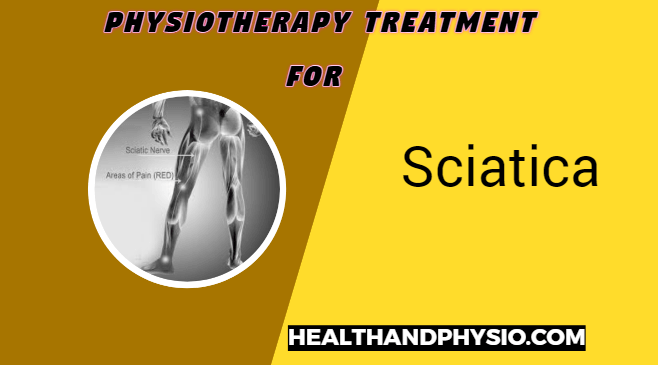Quick Overview
Sciatica refers to pain that radiates along the sciatic nerve, which runs from your lower back through your hips and buttocks and down each leg. This pain can be caused by a variety of factors, including a herniated disc, spinal stenosis, or piriformis syndrome.
While sciatica can be debilitating, physical therapy exercises have proven to be an effective non-surgical treatment option for managing sciatica symptoms and improving overall mobility.

Table of Contents
Understanding Sciatica
Sciatica typically results from the compression of the sciatic nerve. This compression can occur due to a variety of factors, including;
- Herniated Discs: When the soft inner core of a disc in the spine protrudes and presses on the nerve.
- Spinal Stenosis: The narrowing of the spinal canal, which can put pressure on the nerve.
- Spondylolisthesis: A condition in which one vertebra slips forward and pinches the nerve.
- Piriformis Syndrome: Irritation or compression of the sciatic nerve by the piriformis muscle in the buttock.
- Muscle Spasms: Spasms in the back or buttocks can compress the nerve and cause pain.
Read about Geriatric Physical Therapy, Benefits, Approaches
The Role of Physical Therapy
Physical therapy for sciatica focuses on reducing pain, improving flexibility, and restoring normal function. A skilled physical therapist will work with you to create a tailored treatment plan designed to alleviate your specific symptoms. These exercises not only provide relief but also help prevent future episodes of sciatica.
Physical Therapy Exercises for Sciatica Relief
1. Lower Back Stretches
- Knee-to-Chest Stretch: Lie on your back, bring one knee toward your chest, and hold for 20-30 seconds. Repeat with the other knee.
- Cat-Cow Stretch: Get on your hands and knees, arch your back like a cat, and then let your belly sink down while you lift your head and tailbone (cow). Repeat this motion 10-15 times.
2. Hamstring Stretches
- Standing Hamstring Stretch: Stand with one foot on a small stool or step. Bend forward at your hips while keeping your back straight. Hold for 20-30 seconds and switch legs.
- Supine Hamstring Stretch: Lie on your back, lift one leg and use a towel or strap to gently pull it toward you. Hold for 20-30 seconds and repeat with the other leg.
3. Piriformis Stretch
- Seated Piriformis Stretch: Sit with one leg crossed over the other, then gently pull your knee towards your chest. Hold for 20-30 seconds and switch sides.
4. Core Strengthening
- Pelvic Tilt: Lie on your back with your knees bent. Tighten your abdominal muscles to press your lower back into the floor. Hold for 5-10 seconds, then relax. Repeat 10-15 times.
- Bridges: Lie on your back with your knees bent and feet flat on the floor. Lift your hips off the ground, forming a straight line from your shoulders to your knees. Hold for a few seconds and lower. Repeat 10-15 times.
5. Aerobic Exercise
Regular low-impact aerobic exercise like walking or swimming can help improve blood flow and reduce inflammation around the sciatic nerve.
Physical Therapy for Knee Pain: Exercise, Modalities
Tips for Safe and Effective Exercise
- Consult a physical therapist or healthcare professional before starting any exercise program.
- Always warm up before stretching or exercising.
- Perform exercises with proper form to avoid exacerbating the condition.
- Listen to your body. If an exercise causes increased pain or discomfort, stop immediately.
- Gradually increase the intensity and duration of your exercises.
Questions
Q: What are the symptoms of sciatica?
Sciatica is characterized by pain that radiates along the sciatic nerve, which runs from your lower back through your hips and buttocks and down each leg. This pain can vary in intensity, from mild to severe. Other symptoms of sciatica may include numbness, tingling, or weakness in the affected leg.
Q: What are the causes of sciatica?
Sciatica can be caused by a variety of factors, including;
1- Herniated disc
2- Spinal stenosis
3- Piriformis syndrome
Q: How is sciatica diagnosed?
To diagnose sciatica, a doctor will conduct a physical examination and ask you about your symptoms. They may also order imaging tests, such as an MRI or CT scan, to get a better look at your spine and nerves.
Q: What are the treatment options for sciatica?
Treatment for sciatica typically depends on the underlying cause and severity of the condition. Common treatment options include;
1- Physical therapy
2- Medication
3- Injections
4- Surgery
Q: How can I prevent sciatica?
There are a number of things you can do to help prevent sciatica, including:
1- Maintaining a healthy weight
2- Exercising regularly
3- Practicing good posture
4- Avoiding prolonged sitting
5- Using proper lifting techniques
